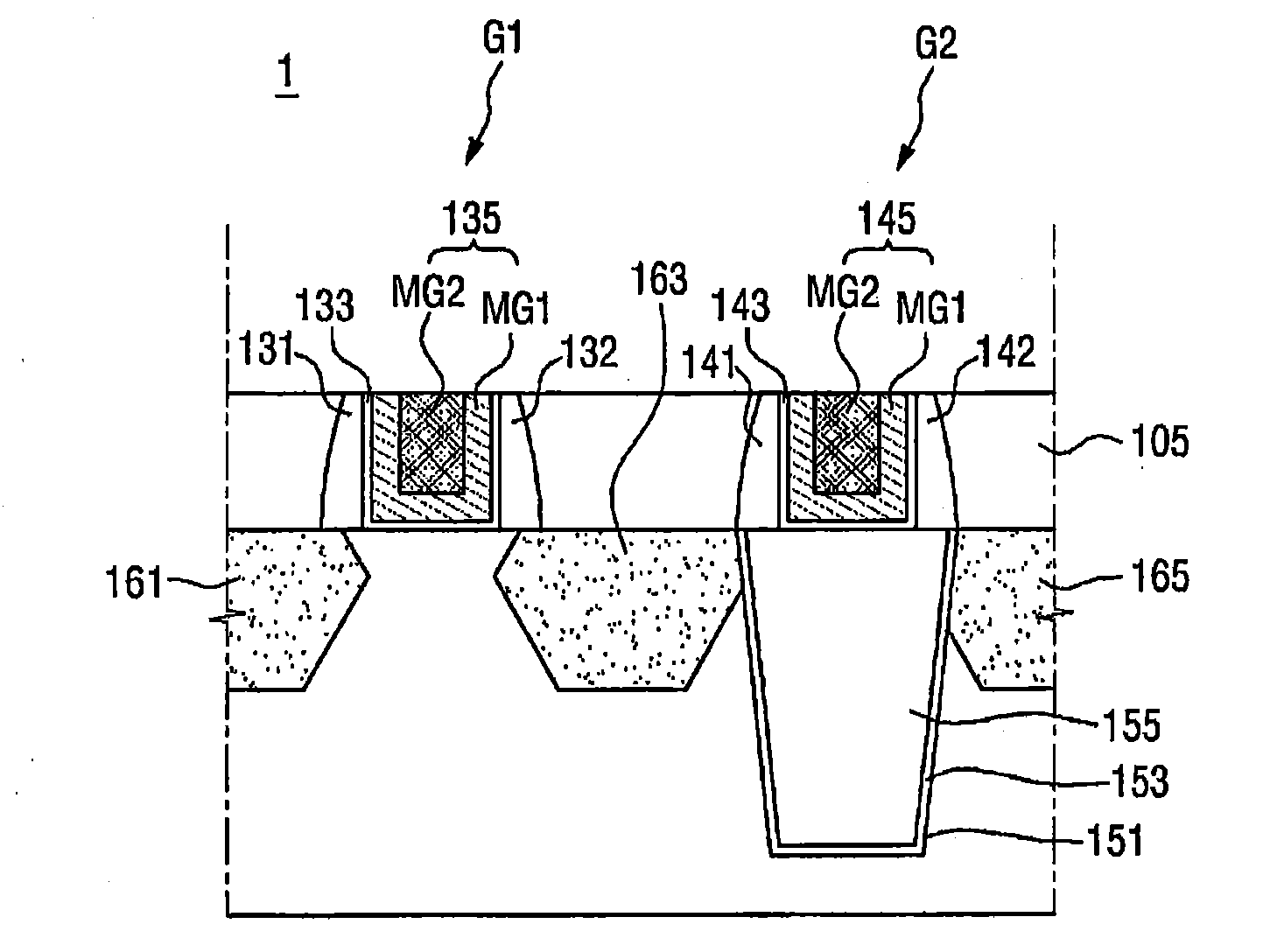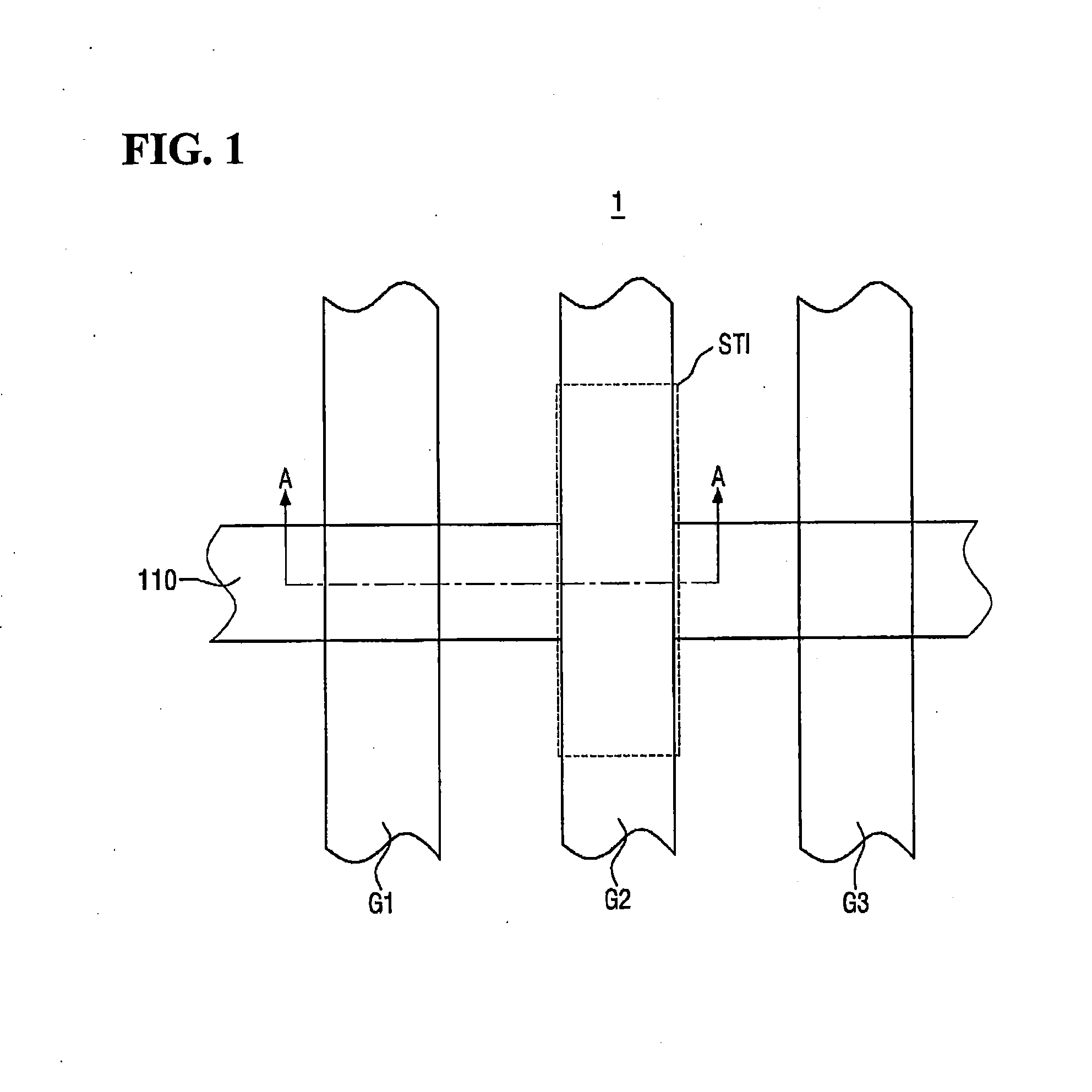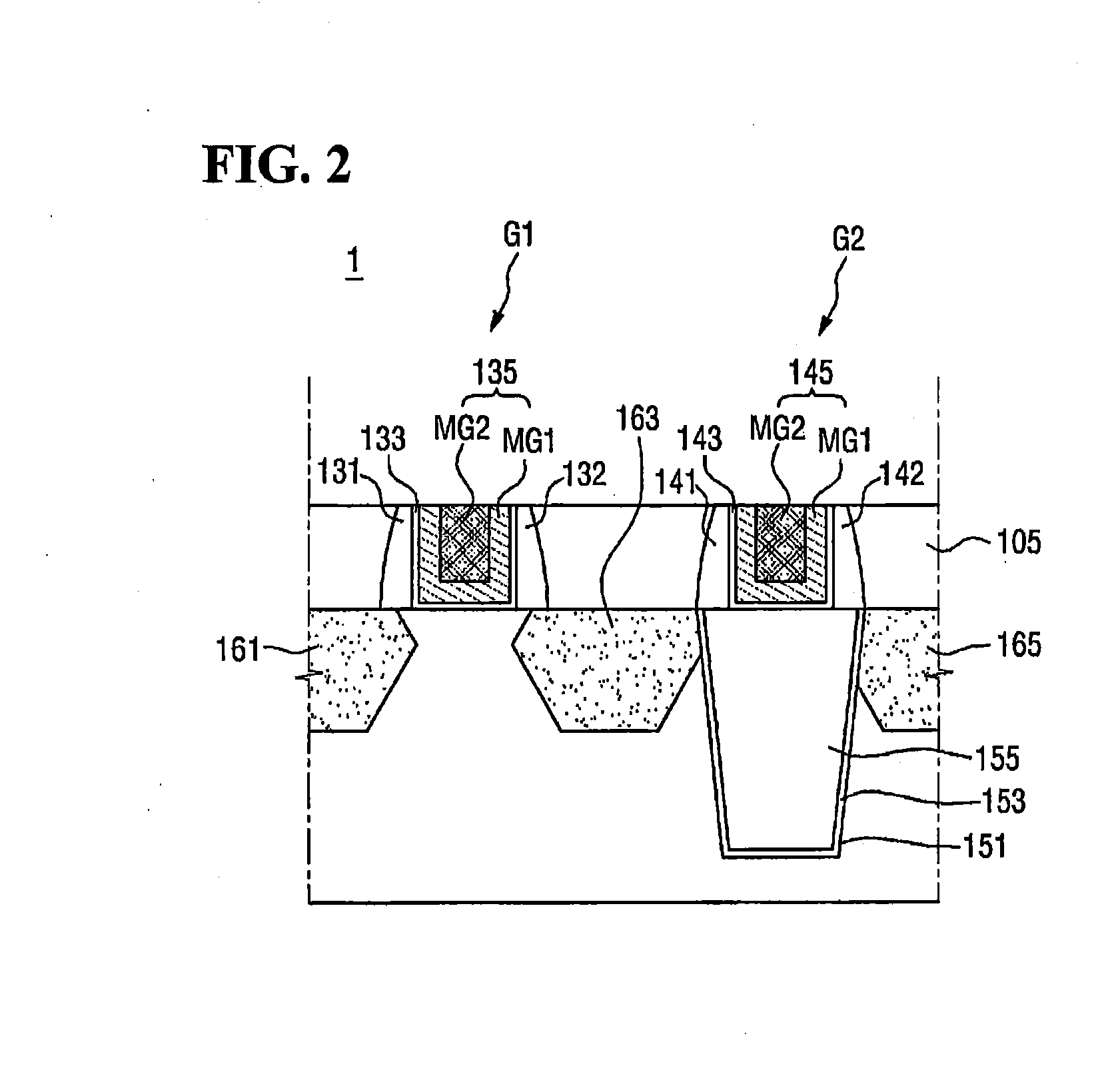Semiconductor devices including shallow trench isolation (STI) liners
a technology of shallow trench isolation and semiconductor devices, which is applied in the direction of semiconductor devices, electrical equipment, transistors, etc., can solve problems such as defects, and achieve the effect of reducing or possibly preventing an occurrence of transistor defects
- Summary
- Abstract
- Description
- Claims
- Application Information
AI Technical Summary
Benefits of technology
Problems solved by technology
Method used
Image
Examples
first embodiment
[0045]FIG. 1 is a diagram for explaining a semiconductor device according to the present inventive concept. FIGS. 2 and 3 are cross-sectional views taken along a line A-A of FIG. 1.
[0046]Referring to FIG. 1, a semiconductor device 1 includes a substrate 100, an active region 110, a first gate structure G1, a second gate structure G2 and a device isolation film (STI) 155.
[0047]The substrate 100, for example, may be a semiconductor substrate. The substrate 100 may include one of silicon, strained silicon, silicon alloy, silicon carbide (SiC), silicon germanium (SiGe), silicon germanium carbide (SiGeC), germanium, germanium alloy, gallium arsenide (GaAs), indium arsenide (InAs), an III-V semiconductor, and an II-VI semiconductor, combinations thereof, and laminations thereof. Also, if necessary, the substrate may be an organic plastic substrate rather than the semiconductor substrate. Hereinafter, the substrate 100 will be described as being made up of silicon.
[0048]The substrate 100 m...
second embodiment
[0072]FIG. 4 is a diagram for explaining a semiconductor device according to the present inventive concept. FIG. 5 is a cross-sectional view taken along a line B-B of FIG. 4. For convenience of explanation, hereinafter, the repeated description of the same matters as the previous embodiment will not be provided, and the description will be provided while focusing on the differences.
[0073]Referring to FIGS. 4 and 5, a semiconductor device 2 according to a second embodiment of the present inventive concept may be formed in the substantially similar manner to the semiconductor device 1 according to the above-mentioned first embodiment of the present inventive concept. The first gate structure G4 may be disposed on the active region 110, and the second gate structure G5 may be disposed on a device isolation film 255.
[0074]However, the second gate structure G5 of the semiconductor device 2 according to the second embodiment may be disposed so as to be in contact with only the upper surfa...
third embodiment
[0076]FIG. 6 is a diagram for explaining a semiconductor device according to the present inventive concept. FIG. 7 is a cross-sectional view taken along a line C-C of FIG. 6. For convenience of explanation, hereinafter, the repeated description of the same matters as the previous embodiment will not be provided, and the description will be provided while focusing on the differences.
[0077]Referring to FIGS. 6 and 7, a semiconductor device 3 according to the third embodiment of the present inventive concept may be formed in the substantially similar manner to the above-mentioned semiconductor device 1 according to the second embodiment of the present inventive concept. However, the semiconductor device 3 according to the third embodiment may further include a third gate structure G9.
[0078]At this time, the first gate structure G7 may be disposed on the active region 110, and the second gate structure G8 and the third gate structure G9 may be disposed on a device isolation film 355. Th...
PUM
 Login to View More
Login to View More Abstract
Description
Claims
Application Information
 Login to View More
Login to View More - R&D
- Intellectual Property
- Life Sciences
- Materials
- Tech Scout
- Unparalleled Data Quality
- Higher Quality Content
- 60% Fewer Hallucinations
Browse by: Latest US Patents, China's latest patents, Technical Efficacy Thesaurus, Application Domain, Technology Topic, Popular Technical Reports.
© 2025 PatSnap. All rights reserved.Legal|Privacy policy|Modern Slavery Act Transparency Statement|Sitemap|About US| Contact US: help@patsnap.com



